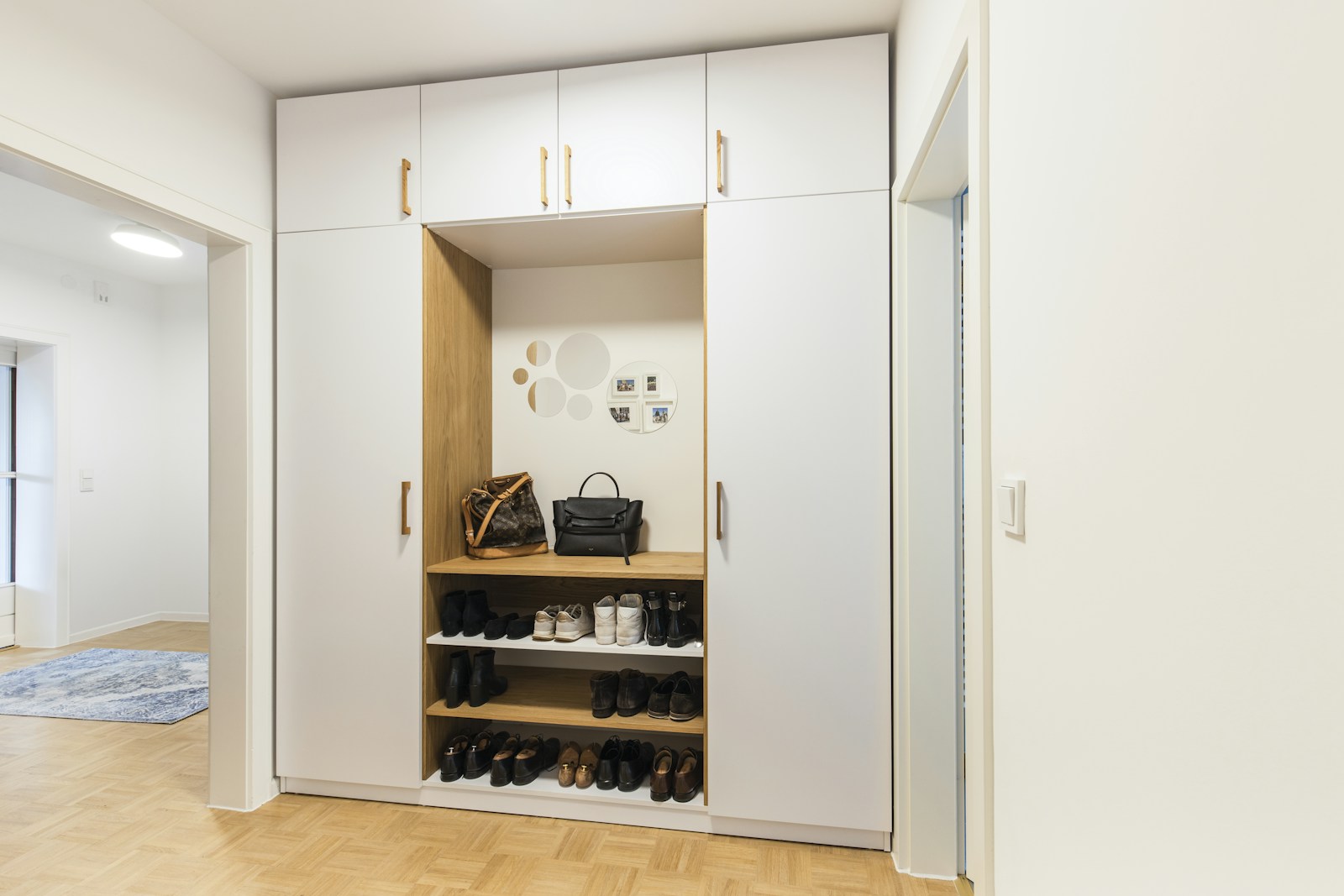
armario

wardrobe
A wardrobe is a standing closet used for storing clothes. The earliest wardrobe was a chest, and it was not until some degree of luxury was attained in regal palaces and the castles of powerful nobles that separate accommodation was provided for the apparel of the great.
Example sentences using: armario
El armario está lleno de ropa.

The wardrobe is full of clothes.
This sentence is using 'El armario' to talk about a wardrobe or closet being full of clothes. It is a common phrase used to describe a very populated wardrobe.
Hay un espejo en el armario.

There is a mirror in the wardrobe.
In this context, 'El armario' is being used to mention the existence of an object inside a wardrobe or closet. The object in this instance is a mirror.
El armario es viejo.

The wardrobe is old.
This sentence uses 'El armario' to describe the condition of a wardrobe. 'Viejo' is Spanish for old, hence the translation.
¿Dónde está el armario?

Where is the wardrobe?
This is a question phrase using 'El armario'. It's a common way of asking the location of an object, in this case, the wardrobe.
Necesito limpiar el armario.

I need to clean the wardrobe.
Here, 'El armario' is used in the context of housekeeping. The sentence implies that the speaker needs to clean the wardrobe.
El armario es muy grande.

The wardrobe is very big.
The word 'El armario' in this sentence is used to describe the size of the wardrobe which is very big.
Compré un nuevo armario.

I bought a new wardrobe.
In this phrase, 'El armario' is discussed in the context of buying new furniture. The speaker is indicating that they purchased a new wardrobe.
El armario está vacío.

The wardrobe is empty.
In this phrase, 'El armario' is used to describe the state of the wardrobe containing nothing.
Abre el armario.

Open the closet.
In this sentence, 'Abre' is the verb to open in imperative mood. 'El' is the definite article 'the' and 'armario' is the Spanish word for 'closet' or 'wardrobe'.
El armario está lleno.

The closet is full.
'El armario' means 'the closet', 'está' is the third person singular of the verb 'to be' in its temporary form (estar), and 'lleno' means 'full'.
Voy a limpiar el armario.

I am going to clean the closet.
'Voy a' is a way to express the future, equivalent to 'I am going to'. 'Limpiar' is the verb 'to clean', and 'el armario' means 'the closet'.
El armario es antiguo.

The closet is old.
'El armario' means 'the closet'. 'Es' is the third person singular of the verb 'to be' in its permanent form (ser), and 'antiguo' means 'old'.
El armario es de madera.

The closet is made of wood.
'El armario' means 'the closet'. 'Es de' is a phrase used to express composition or material, and 'madera' means wood.
Hay un gato en el armario.

There is a cat in the closet.
'Hay' is an impersonal verb that can be roughly translated as 'there is' or 'there are'. 'Un gato' means 'a cat', and 'en el armario' means 'in the closet'.
El armario tiene cuatro puertas.

The closet has four doors.
'El armario' means 'the closet'. 'Tiene' is the third person singular of 'to have', and 'cuatro puertas' means 'four doors'.
El armario está vacío.

The closet is empty.
'El armario' means 'the closet', 'está' is the third person singular of the verb 'to be' in its temporary form (estar), and 'vacío' means 'empty'.
El armario está al lado de la cama.

The closet is next to the bed.
In this sentence, 'El armario' is 'the closet', 'está' is third person singular of the verb 'to be' in its temporary form, 'al lado de' means 'next to', and 'la cama' translates to 'the bed'.
Mis ropa está en el armario.

My clothes are in the closet.
In this sentence, 'Mis' means 'my', 'ropa' is the Spanish word for 'clothes', 'está' is the third person singular of the verb 'to be' in its temporary form, 'en' means 'in', and 'el armario' is the Spanish term for 'the closet'.
Organicé mi ropa en el armario.

I organized my clothes in the wardrobe.
In this sentence, 'El armario' is used in the context of organizing clothes in the wardrobe.
El armario tiene tres cajones.

The wardrobe has three drawers.
This phrase shows how to use 'El armario' when discussing specific features of a wardrobe. In this case, the number of drawers it has.